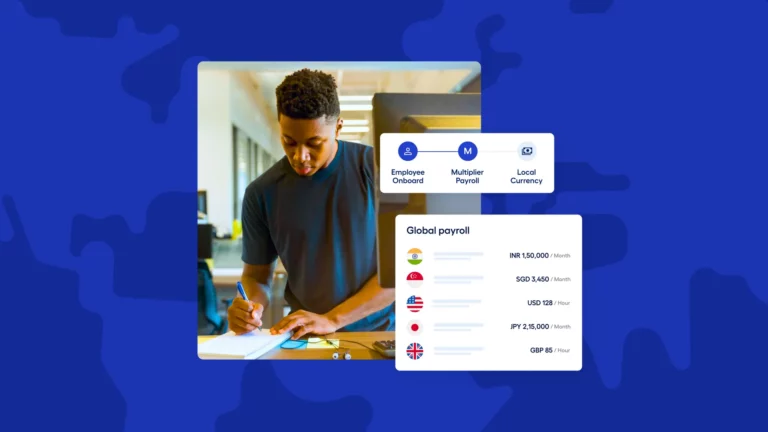Employment today has evolved to be much more than the hire or fire approach. The system has become more flexible with individuals looking for “side-hustles” and non-traditional job roles.
According to Peoplescout, nearly 40% of the U.S. workforce have a non-traditional job of some form. They are willing to take up such roles as it offers flexibility to work from anywhere and lets them pursue different interests.
Companies are also welcoming this change as they can fill roles based on demand fluctuations and growth without exceeding the overall cost of hiring.
Let us look at the different types of non-traditional workers existing today.
The Three Types of Workers
There are three basic categories of workers available in the market. They vary based on their relationship with your company.
1. Direct employees
Direct employees are full-time workers hired to work for your company. They are employees who are regularly scheduled and budgeted by you to work for a specific set of hours. These employees come under your payroll.
2. Contractors
Individuals who have a contractual agreement with your business to work in exchange for an agreed fee come under this category. Their relationship with your company is restricted to the terms specified in the contract.
They can either be hired permanently to work with alternate projects or as temporary workers for a short span. Either way, they also come under your payroll during the contract period.
3. Contingent Workers
A contingent worker is an individual who does not have a contract defining his time of employment with your company. These workers include freelancers, consultants, part-timers, and on-call workers.
The notorious stigma that marks the contingent workforce as unskilled or less-skilled workers is now diminishing. Today, the contingent workforce also contains skilled employees who can directly work without pre-training. This is just one reason among a slew of benefits for companies to hire them for immediate short-term needs.
With non-traditional workers, you focus on their results rather than their methods of work. They reduce the time you spend on employee guidance and training.
Contingent Worker Categories
Until now, we have unified the term contingent worker. However, digging deeper, there are different types of contingent workers.
1. Freelancers
Freelancers and gig workers are self-employed workers working with different businesses to attend to their immediate needs. They are individuals equipped with the necessary skills and tools to perform the tasks. Thus, you can wield their services for short-term requirements when you need their skills or some extra hands on the deck.
2. Consultants
Experts in their domain, they offer suggestions, analyses, and strategies to help your business perform better. They troubleshoot problems and offer advice to evade them based on their expertise. They operate at higher levels to improve your overall business strategies and goal settings.
3. Part-timers
Juggling between different jobs, they work with two or more companies simultaneously for lesser working hours. They work at hourly rates and are also equipped with sufficient knowledge to work on your requirements.
4. On-call workers
On-call workers are those available to work for you upon sudden circumstances. They do not have a predictable work schedule or defined working hours. They include “zero-hours” contracts to stay available round the clock and thus, can be challenging.
Contingent worker vs. Contractor
This can be touchy differentiation as some consider contractors as contingent workers while some categorize them separately. There exists a divided opinion. Looking it up on the legal websites, we were able to boil it down.
The US Labor Department defines this in terms of who is responsible for the taxes. When a company hires a worker, temporary or permanent, they must take care of their taxes. However, when independent contingent workers are hired, they do not become employees and thus, have to take care of their own taxes.
According to this definition, independent contractors are similar to freelancers and come under contingent workers while contracted employees come under a separate category. Simply put, it depends on whether the individual is treated as a freelancer or an employee.
Contingent workers vs. Contractors vs. Core Employees
Today, hiring is flexible with respect to the type of worker you need. For efficient hiring of different employees, you must understand how they differ from each other. Only then can you choose the right kind for the right task.
Let us discuss these differences here.
1. Control of employer
As an employer, you have defined control over your workforce meaning, with each type of worker, your degree of control varies. It can include your authority over their payroll, daily working hours, work nature, and availability.
With your direct hires, you have extensive control over the employment terms. You decide:
- the pay,
- work shifts, and
- working hours.
The policy mandates the availability of employees during the stated working hours and a crisis.
It is quite different for independent contractors. Their work schedule and hours of work are agreed via a contract. However, they are also expected to stay available during the agreed working hours.
As an employer, you have minimal control over the terms with contingent workers. They work independently and set their working hours, work schedule, and availability.
2. Pay
Your core employees come under your payroll. As their employer, you decide their payroll and cater to their other monetary needs. They receive their pay as salaries or paychecks, usually over a standard period. It can be:
- Bi-weekly,
- Monthly, or
- Annually.
The payments do not vary much unless there are progressive hikes or profit-sharing plans in place.
For contractors, the pay is discussed while drafting the contract and remains the same throughout their employment. Unlike your direct hires, their pay need not be over a standard period but can also be based on the completion of given tasks.
Payment methods for contingent workers are a whole arena altogether. Workers send their own invoices that are then encashed by you.
3. Taxes
As their employer, you take care of the taxes and other payroll regulations for your direct hires as well as contractors until their tenure is over.
However, in the case of contingent workers, it is a different ball game. They take care of their own taxes. They have additional tax regulations related to self-employment that must be weighed in while filing taxes.
4. Benefits
Besides paychecks, companies also offer employee benefits. It can include monetary benefits such as progressive hikes, profit-sharing and insurances, and physical benefits such as vacations, team trips, paid leaves, etc.
Your core employees are eligible to avail all the benefits your company offers as stipulated in their employment agreements. Contractors enjoy a few benefits that fall within the scope of their contract.
However, contingent workers do not fall under the employee category. Thus, are ineligible for the benefits you offer.
5. Equipment and tools
With your direct hires, you provide all the necessary equipment and tools they would need to work efficiently. It includes all the necessary machines, software, etc.
An added benefit in providing the equipment is data security. As your employees work with the tools you provide, you can control the data flow and prevent security breaches.
With contractors also, you provide the required equipment and tools they need to perform the given task. As it is a temporary arrangement, they’d use your equipment as long they work for you.
With contingent workers, you need not provide the necessary tools for them to work. They use their equipment but can avail some software tools to have seamless communication and workflow with your company.
However, the snag here is the vulnerability of company data. Use their own tools increases the risk of data theft or mishandling that can cause serious issues. Thus, it is better not to share confidential information with them.
Sometimes, contingent workers are leased to you by a staffing agency. Under such circumstances, their needs including payroll, taxes, and benefits are taken care of by the agency.
How Multiplier Helps
With the availability of such diverse employment options, you can adopt a cost-effective hiring procedure that is optimized to best suit your needs.
With hiring different employees comes the task of managing them. It poses a challenge to regulate the different payroll norms and tax filings. It gets even more tedious when you are a global employer hiring across borders.
Multiplier, a SaaS-based HR service provider, helps you manage your varied workforce. We offer an array of HR solutions to simplify and streamline your workflows.
Our EOR solutions let you hire such a diverse crew of employees across countries without you having to set up local entities. We serve as your local platform and offer a smooth hiring process.
Partner with our PEO solutions to adhere to the changing local labor laws and stay compliant with the different regulations in different countries.
As global payroll providers, we help you manage your payroll system and automate it to cut the frills on the entire pipeline. Our experts manage the complex global payroll, comply with tax norms and employee benefits to cater to the different workers.
A holistic HR provider should offer a customizable, all-in-one platform to help you track, make changes and manage the entire system within your budget. With Multiplier, you can handle it all in a single click at a reduced cost. Check out our flexible pricing plans to know more.
Book a demo with us to explore more of what we have to offer.







